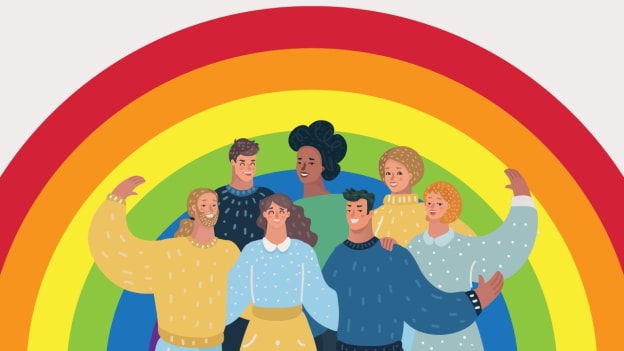Best practices & the role of HR in PRIDE-friendly workspaces

The month of June is celebrated as PRIDE month, which is a reminder of the progress we have made and the work that lies ahead to ensure that our organisations are truly equal, diverse, and inclusive. Whilst many companies have been making strides in this area, there still remains a need in some workplaces to introduce initiatives and programs that ensure a safe, secure, and inclusive workplace for the LGBTQIA+ community. These initiatives can take many forms and can be relevant for all - those who identify as part of the community as well as those who do not.
Much like the LGBTQIA+ community themselves, a company can express their support for the community in diverse ways, and they can select initiatives based on the unique personality and nature of their organisation and employees.
The Role of the Human Resource Function
A company’s human resources function is uniquely placed to drive D&I initiatives and ensure that its LGBTQIA+ team members feel welcome and safe at the workplace. At every stage of the employee lifecycle - hiring to retiring - the function can take a bird’s eye view and drive initiatives to ensure an inclusive culture.
Some of the areas in which HR plays a key role in building an inclusive culture:
- Coaching Leaders: An organisation is as strong as its leadership as every team member experiences the organisation through their leader. A leader who reflects the core values of the company and drives an inclusive environment sets the right tone for the organisation. Coaching leaders to do the right thing is one of the key impact areas for the HR function.
- Establishing inclusive processes: At all stages of the employee lifecycle an organisation has the opportunity to define processes that are inclusive. Right from the language used to the training provided to identify and nurture diversity – as a people function, we have an opportunity to make a difference. A great example is the hiring practices where, for example, developing neuro-inclusive recruiters who understand the importance and advantages of hiring neuro-divergent individuals to bolster the talent pool beyond neuro-typical candidates is essential.
- Setting up an inclusive benefits program: As the awareness around the subject evolves, we see companies offering tailor-made benefits to the LGBTQIA+ community. The HR function plays a key role in evaluating the appetite for benefits expansion and ensuring that the right investment is made in inclusive benefits.
- Creating an inclusive environment: A key role of the HR function is to create an inclusive environment in letter and spirit. One has to keep an eye for overt and covert behaviour that can vitiate the environment and negate the gains that have been painstakingly achieved. Identifying micro-aggressions early and addressing the matter openly is a key to success on this front.
Provide employees avenues to give feedback openly and discretely - Through mediums such as employee survey, all-hands discussions, one-on-ones etc. Providing employees avenues to share their feedback, perspective and their stories helps create an open dialogue that finally leads to building an inclusive work culture.
The areas of gender and identity are constantly evolving and workplace sensitization sessions for employees to help them understand the nuances of these subjects are also of vital importance.
A well-designed and engaging sensitization program can be helpful in:
- Informing and guiding employees on appropriate ways of addressing and interacting with LGBTQIA+ colleagues, clients and partners.
- Facilitating discussions between employees of all groups, with the goal of highlighting positive as well as discriminatory workplace practices and policies that need attention.
- Explaining the introduction of suitable policies that ensure no discrimination on grounds of sexual orientation, gender and identity.
Language plays an important role in gender and identity. The proper usage of a person’s preferred pronouns can go a long way towards making them feel welcome and included, whilst improper usage can feel discriminatory and exclusionary. Organisation-wide policies that encourage appropriate pronoun-usage can be powerful ways to drive inclusivity and diversity in a workplace.
One should also recognize that supporting and advancing the LGBTQIA+ community is not limited to a single month. PRIDE month should be a time to reflect on the progress we have made and identify what still needs to be done to achieve equality and inclusion.
Dell Technologies India’s PRIDE Employee Resource Group (ERG) envision’ s a world where people of all sexual orientation and gender identifications - LGBQTIA+ are ensured equality and embraced as full members of the family at home, work, and in every community.
All Dell facilities have gender-neutral restrooms. Our medical insurance provides coverage for same sex partners – who were also covered in our COVID-19 vaccination drive as well. On the cards are plans to help LGBTQIA+ community members find rental accommodation where they don’t feel the need to remain closeted.
On a closing note, it makes one feel incredibly proud of how far we’ve come in building an inclusive workplace. However, as an ally, we do have an opportunity to continue to make a difference. If each one of us commits to sensitising our communities to be more inclusive in outlook and actions – we can do our bit for making the world a better place.






